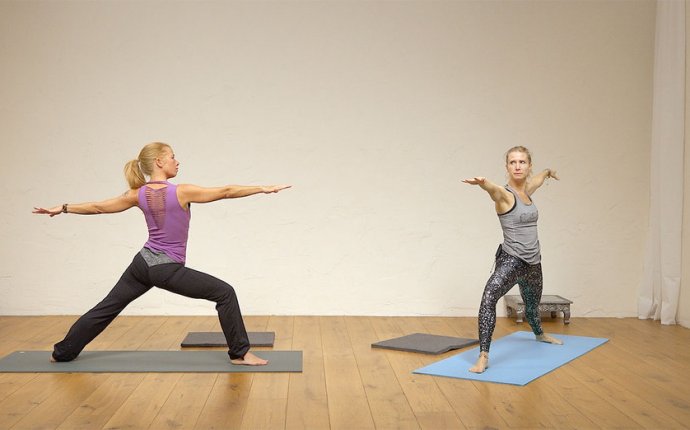
Asana Meditation
Waking up in the everyday world usually means arising from sleep and opening your eyes. In yoga and meditation traditions, the act of awakening connotes removing the sleepiness of misperception and ignorance, allowing one to witness reality clearly. This awakening is often translated from the sanskrit word bodhi. You may recognize this word as part of other concepts, such as bodhichitta (awakened heart-mind) and bodhisattva (awakened compassionate warrior). All of these share the same root as the word buddha, which essentially translates as “awakened one.”
Various traditions offer their own distinct paths for practitioners to follow in their effort to realize bodhi. In the beginnings of my asana practice, I honestly felt it was possible to awaken through physical practice alone—that after X number of surya namaskars and savasanas, a kinder, gentler version of myself would somehow emerge. Like many others, I was amazed by the enormous benefits I experienced when I began a committed practice. Years of back pain from sports and an aggressive dance career virtually vanished. Pounds I had obsessed about when in the throes of an eating disorder began to fall away (along with the intensity of the obsession itself). I often left classes feeling buzzed and happy, acquired postures like trophies, and enthusiastically welcomed into my daily vocabulary new words like Guruji and Gita.
Various traditions offer their own distinct paths for practitioners to follow in their effort to realize bodhi. In the beginnings of my asana practice, I honestly felt it was possible to awaken through physical practice alone.
As I stepped, starry-eyed, into my first teacher training, I eagerly tried other aspects of what I now consider a holistic practice: pranayama (breath work), restorative and yin practices, and meditation. While these practices often helped me feel spacious and relaxed, they did not give me the same body buzz I experienced in the more physically demanding practices. Nor did they offer the intellectual satisfaction that the study of anatomy and alignment gave my mind. So I quietly discarded them to focus almost solely on asana.
A year after my first teacher training, I moved to New York City. There, in addition to teaching, I became deeply immersed in the business side of yoga: running everything from small neighborhood studios to large corporate centers with hundreds of teachers. As my career developed, I ascended two separate ladders—that of a teacher, and the other of a businesswoman. In many ways, I lived a double life that epitomized the modern-day chasm between traditional practices aimed at spiritual awakening, and the oxymoronic realm of commercialized yoga. In a matter of hours, I could shift from trying to fill classrooms in studio-saturated Manhattan to leading a class of heart openers in a warm candle-lit space. There was so much I loved about both roles, but I also often felt conflicted and polarized by my work. And the knowledge I gained on the business side certainly underscored many of the competitive and unhealthy traits that had initially been mitigated by my practice of asana.
From the standpoint of career and financial success in the current yoga world, I was poised for great things. But from the standpoint of awakening, I was lost at sea.
Fast forward five years. I began making a name for myself, in part through a practice I developed that combined asana with breakdance, which I had been doing since college. It caught on and spread nearly overnight. Before I could say “eka pada koundinyasana, ” I was being invited to teach prime-time slots at some of the most well known yoga centers in Manhattan, traveling all over the country to share my work at studios and festivals. I was even featured in Yoga Journal, New York Magazine, and other popular national and international publications. While my dynamically postured body was plastered on the wall of the highest-grossing Lululemon store in the country (as one of their ambassadors), I was discussing public relations protocols with potential investors and negotiating contracts with national fitness chains.
What does the sympathetic nervous system do? stories on how 4-h contributed to personal development, leadership skills What are drip tips? How blaine tricks? how to improve masturbation session What does deplorable mean? how to improve your laptop What does hot mess mean? what benefits does delta silver medallion get you what is the relationship between antigen presenting cells and helper t cells What does cap mean in slang? who creates the definition of done vce how do you determine unemployment benefits What is a meaning of proverbs? Tips for someone who is terrible at putting on makeup and has terrible skin? what are some benefits of taking a multivitamin everyday when did benefits become much more popular What does a heat pump look like? What does faction mean? how to improve machine learning model What is radiation? What does nose ring mean sexually? individuals who are eligible for both medicaid and medicare benefits are called How to reprogram firestick remote? how to measure astigmatism How to clean leather jacket? how can rubrics be used to assess skills, monitor progress, and guide educational decisions? how much native american do you need for benefits what is the definition of fretful how to develop project management skills Police tips where to hide the key to your safe key? definition: this is the way a letter or a word sounds when spoken. what are the health benefits of wheatgrass powder How do i cash in tips security? how long after you pay off debt does your credit improve How to improve signal for my router diy tricks? how can i improve my asvab score What dose cunt mean? dr phill advice about sombody who dont love you what is the difference between perfect and imperfect flowers Teach me how to do some cool trampoline tricks? How to hook up? What are ceramides?








